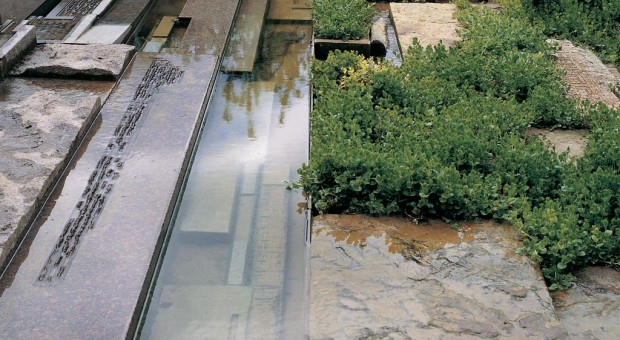- Stuttgart Memorial Garden
Stuttgart Memorial Garden

The City of Stuttgart commissioned Michael Singer to design and construct a one acre Memorial Garden within Killesberg Park. The garden was conceived as a series of enclosed and layered spaces for remembrance. The project is defined by two primary spaces, one a shaded area and one opening to the light. The spaces are enclosed by vegetation and sculpted wood gates. Two existing small streams converge at the site, augmented by three wells designed by Singer. The water collects in quiet pools, revealing sculptural forms and chambers below the surface. In effect, the sculptural pools and wells slowly cleanse and aerate the water as it moves through the garden. Pockets of native vegetation are built within the pools and emerge as though from a layer of earth beneath the water. While most of the water in the garden seems still, the passage of the water can be heard moving in concealed troughs throughout the garden.
Materials for the Stuttgart Memorial Garden include stone, sculpted precast concrete, bronze, wood, indigenous plantings, concrete foundations and soil. The site is surrounded by an old apple orchard that was restored as part of the garden design. Adjacent to the project site is a now fully vegetated hill that was created after World War II from the rubble of nearby buildings. A poem found in 1945 among messages on a ghetto wall in Warsaw and originally written by Nachman of Breslow, circa 1800, is inscribed on a granite tablet within the Memorial Garden: “The world in its entirety is a narrow bridge, the main thing is not to be afraid.”
Architectural Record editor Cliff Pearson wrote an article about the garden in the July 2002 edition of the magazine on memorials and memorial spaces.
This website provides a good deal of information about the project.
Artist / Designer: Michael Singer
Singer Studio Project Team: Sterling McMurrin and David Hyman
Landscape Architect: Luz and Partner
Photography: K.D. Bush

